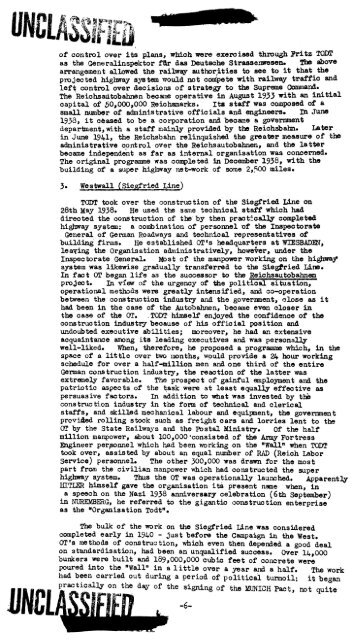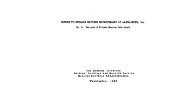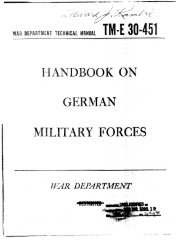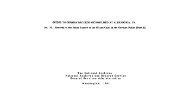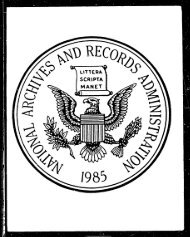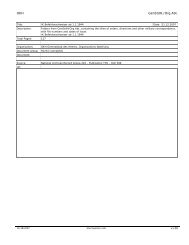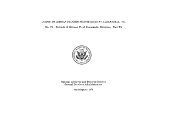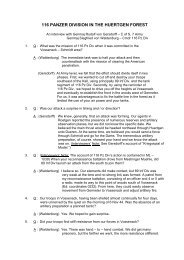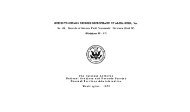miRS-tonpon - Sturmpanzer.com
miRS-tonpon - Sturmpanzer.com
miRS-tonpon - Sturmpanzer.com
Create successful ePaper yourself
Turn your PDF publications into a flip-book with our unique Google optimized e-Paper software.
of control over its plans, which were exercised through Fritz TQDTas the Generalinspektor fQr das Deutsche Strassenwesen. Tbe abovearrangement allowed the railway authorities to see to it that theprojected highway system would not conipete with railway traffic andleft control over decisions of strategy to the Supreme Command.The Reichsaiitobahnen became operative in August 1933 with an initialcapital of £0,000,000 Reichsmarks. Its staff was <strong>com</strong>posed of asmall number of administrative officials and engineers. m June1933, i t ceased to be a corporation and became a governmentdepartenent,with a staff mainly provided by the Reichsbahn. Laterin June 1941, the Reichsbahn relinquished the greater measure of theadministrative control over the Reichsautobahnen, and the latterbecame independent as far as internal organisation was concerned.The original programme was <strong>com</strong>pleted in December 1938, with thebuilding of a super highway net-work of some 2,f>00 miles.3. Westwall (Siegfried Line)TQDT took over the construction of the Siegfried Line on28th May 1938. He used the same technical staff which haddirected the construction of the by then practically <strong>com</strong>pletedhighway system: a <strong>com</strong>bination of personnel of the InspectorateGeneral of German Roadways and technical representatives ofbuilding firms. He established OT's headquarters at WE3SBADIN,leaving the Organisation administratively, however, under theInspectorate General. Most of the manpower working on the hi^wra/system was likewise gradually transferred to the Siegfried Line.In fact 0T began lif e as the successor to the Reichs autobahn enproject. In view of the urgency of the political situation,operational methods were greatly intensified, and co-operationbetween the construction industry and the government, close as ithad been in the case of the Autobahnen, became even closer inthe case of the 0T. TODT himself enjoyed the confidence of theconstruction industry because of his official position andundoubted executive abilities; moreover, he had an extensiveacquaintance among its leading executives and was personallywell-liked. When, therefore, he proposed a programme which, in thespace of a littl e over two months, would provide a 24 hour workingschedule for over a half-million men and one third of the entireGerman construction industry, the reaction of the latter wasextremely favorable. The prospect of gainful employment and thepatriotic aspects of the task were at least equally effective aspersuasive factors. In addition to what was invested by theconstruction industry in the form of technical and clericalstaffs, and skilled mechanical labour and equipment, the governmentprovided rolling stock such as freight cars and lorries lent to the0T by the State Railways and the Postal Ministry. Of the halfmillion manpower, about 100,000 'consisted of the Army PortressEngineer personnel which had been working on the n Wall B when TQDTtook over, assisted by about an equal number of RAD (Reich LaborService) personnel. The other 300,000 was drawn for the mostpart from the civilian manpower which had constructed the superhighway system. Thus the 0T was operationally launched. ApparentlyHITLER himself gave the organisation its present name when, ina speech on the Nazi 1938 anniversary celebration (6th September)in NUREMBERG, he referred to the gigantic construction enterpriseas the "Organisation Todt".The bulk of the work on the Siegfried Line was considered<strong>com</strong>pleted early in 1940 - just before the Campaign in the West.OT's methods of construction, which even then depended a good dealon standardisation, had been an unqualified success. Over 14,000bunkers were built and 189,000,000 cubic feet of concrete werepoured into the "Wall" in a littl e over a year and a half. The workhad been carried out during a period of political turmoil: it begand the 3l^±n^^ ^ ^ ° f MUNICH Pact, not quite-6ofthe


